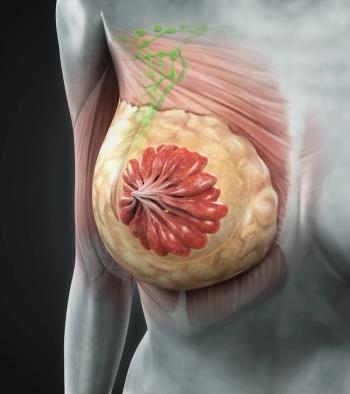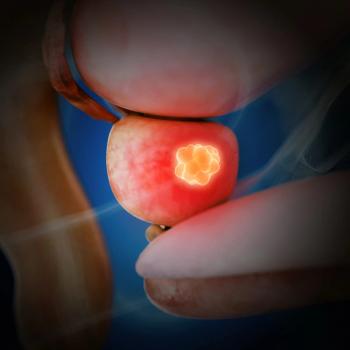
- ONCOLOGY Vol 22 No 1
- Volume 22
- Issue 1
Thalidomide Added to Standard Therapy Prolongs Overall Survival in Newly Diagnosed Multiple Myeloma Patients Over Age 75
Pharmion Corporation announced final data from a randomized, double-blind, placebo-controlled phase III trial demonstrating that the addition of thalidomide (Thalomid) to standard treatment improves survival by 17.6 months in patients over age 75 newly diagnosed with multiple myeloma compared to standard treatment, consisting of melphalan and prednisone (MP) alone.
Pharmion Corporation announced final data from a randomized, double-blind, placebo-controlled phase III trial demonstrating that the addition of thalidomide (Thalomid) to standard treatment improves survival by 17.6 months in patients over age 75 newly diagnosed with multiple myeloma compared to standard treatment, consisting of melphalan and prednisone (MP) alone. These data, along with results from 12 additional studies of thalidomide, were presented at the 49th Annual Meeting of the American Society of Hematology (ASH) in Atlanta.
"These data further demonstrate that the addition of thalidomide to standard first-line therapy for patients with multiple myeloma, even relatively elderly patients, can provide a significant overall survival benefit," said Patrick J. Mahaffy, president and chief executive officer of Pharmion, which markets Thalomid outside of the United States.
The phase III dual-arm randomized study compared overall survival in patients receiving standard therapy of melphalan and prednisone plus placebo (MP-placebo) or standard therapy plus thalidomide (MP-T). A total of 232 patients were randomized to one of the two treatment arms, and 229 were analyzed for the presentation. In the analysis, the median overall survival in the MP-T arm was 45.3 months, compared to 27.7 months for MP-placebo (P = .033, log-rank test). Median progression-free survival was significantly higher in the MP-T arm-24.1 months, compared to 19 months for the MP-placebo arm (P = .001).
Though increased rates of peripheral neuropathy, neutropenia, and depression were observed in the MP-T arm of the study, no significant differences in rates of deep venous thrombosis or somnolence were found between the treatment arms. Toxicities in the MP-T arm were considered acceptable in this very elderly population.
"While the MP-T treatment regimen has become a standard treatment for newly diagnosed patients with multiple myeloma up to 75 years of age, those older than 75 represent more than 20% of myeloma patients, and are frequently excluded from large-scale clinical trials," said Cyrille Hulin, MD, on behalf of the Intergroupe Francophone du Myelome and a principal investigator of the trial. "These are the first data to demonstrate the therapeutic benefit of the addition of thalidomide to MP for patients over age 75, which together with other recent data, demonstrate that MP-T therapy should become the reference treatment for all patients older than 65 years with newly diagnosed multiple myeloma."
Articles in this issue
almost 18 years ago
What Is the Role of Maintenance Rituximab in Follicular NHL?almost 18 years ago
ONCOLOGY: A Look Aheadalmost 18 years ago
FDA Approves Thyrotropin Alfa for Use in Thyroid Cancer Ablationalmost 18 years ago
Can Patient Reporting Affect Radiation Pneumonitis?almost 18 years ago
Anastrozole Confirmed Superior in Breast Cancer Preventionalmost 18 years ago
Critical Questions About Rituximab Maintenance in Lymphoma PatientsNewsletter
Stay up to date on recent advances in the multidisciplinary approach to cancer.
























































































